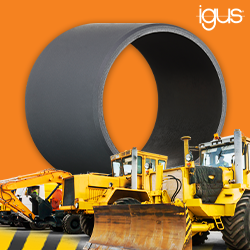Agritech Is Helping Farmers Adapt to Climate Change and Severe Weather — Here’s How
.jpg)
Climate change has had devastating effects on the environment and weather patterns, significantly impacting essential sectors like agriculture. However, farmers are becoming more adaptable, using new technologies to weather storms and find ways to keep the land productive despite environmental challenges.
The Effects of Climate Change and Severe Weather on Agriculture
Climate change and severe weather are bringing unprecedented changes to agriculture. Many old methods no longer work, pushing farmers to adapt for survival.
Changing Agricultural Productivity
Changes in weather patterns are affecting the viability of various crops. A 2021 study predicted that corn yields could decline by 24% due to high greenhouse gas emissions. Climate change may also bring about different weeds, insects and diseases, putting crops in danger and requiring heavier weed and pest control practices.
Effects on Natural Resources
Climate change often comes with heavier rains. Increased precipitation can cause erosion and runoff, carrying various pollutants across the land and into water sources. With warming temperatures, runoff could reduce oxygen levels and kill fish and other marine life.
Human Health Risks
Recent years have witnessed record-breaking temperatures worldwide. Farmers are exposed to this more extreme weather, which can adversely impact their health. That weather can also prompt them to use heavier doses of pesticides — which introduce public health hazards — to protect crops.
5 Ways Farmers Are Using Agritech to Adapt
More farms are incorporating technology and digital tools into their processes to make up for the effects of climate change and extreme weather. Here’s how you can use agritech to fill the gaps and improve farming practices:
1. Precision Farming for Resource Conservation
Precision farming uses data and technology — such as drones, sensors and satellite imaging — to optimize farming inputs and processes. It allows you to monitor soil and crop conditions so you only use precious resources like water and fertilizers when necessary and in areas that need them.
2. Monitoring Soil Health
The condition of the soil determines how well certain crops can grow. If the soil is too dry or compacted, essential nutrients and oxygen will not reach the roots. Agritech and precision farming help you monitor the land and improve control over fertilizer and pesticide use, which can affect soil conditions.
3. Efficient Pest and Disease Management
Changing environmental conditions can lead to different or heavier pest and disease infestations. Agricultural sensors, drones and data analytics alert you of potential infestations before they worsen and affect the entire yield.
When used with precision agriculture, farmers can use just enough resources or pesticides to resolve the issue. They can also explore organic options to prevent chemicals from seeping into the soil and bodies of water.
4. Developing Climate-Resilient Crop Varieties
Genetic engineering has evolved to create climate-resilient crops more likely to survive severe or different weather conditions brought about by climate change. The UN has made this effort a priority to protect food security worldwide, encouraging breeders to collaborate with scientists to improve species diversity and availability.
5. Diversifying Crop Planning
Aside from creating new crops, agritech can help you plan diverse fields. By analyzing the soil, environment and other elements, farmers can determine the best crops and planting schedules for the area.
Relying on a single crop for a large area can make it more vulnerable to sudden weather changes. Monocropping is also a harmful agricultural practice, as it affects the soil, decreases crop yield and quality, and increases pests and diseases.
Developing Resilience
Changes in weather patterns and global temperatures heavily affect how farmers grow necessary crops. However, emerging tools like agritech are helping producers adapt and work with these changes, ensuring humanity’s access to food and raw materials.
Comments (0)
This post does not have any comments. Be the first to leave a comment below.
Featured Product

